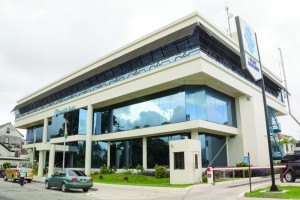
Several of Republic Bank’s branches in Grenada, Guyana and Barbados are now benefiting from reduced energy consumption and operating costs, thanks to the implementation of the Lutron Quantum Lighting System.
According to a release from the bank following global corporate trends aimed at lowering environmental impacts, the bank pioneered the installation of the energy-efficient solution at 11 of its regional branches, reducing the kilowatt-per-hour (kwph) consumption.
After reviewing the energy costs in Republic Bank’s subsidiaries in 2010, IT Energy Management (ITEM) proposed the Lutron Eco Lighting System, the predecessor of the quantum system. The bank piloted the system at the Melville Street branch of Republic Bank Grenada, and since then has been able to reduce lighting energy consumption by 60 per cent, with a resultant reduction on its energy bills and saving upwards of 18 per cent. These, and other preliminary findings, led to the bank’s implementation of the system at the other subsidiaries in Barbados and Guyana, where energy costs are particularly high.
In commenting on the project, Republic Bank’s Corporate Operations and Process Improvement General Manager, Farid Antar noted “Republic Bank has always been environmentally-conscious, constantly seeking new and innovative ways to reduce our carbon footprint. We are pleased with the outcome and expect to widen our use of similar technologies going forward”.
The Lutron Quantum Lighting System maximises the efficient use of lighting in the building, primarily through dimmable ballasts. It has the ability to detect fine motions and adjust lights, whether on or off, according to the needs of the user.
It also makes use of ambient lighting, by dimming lighting fixtures to a level that is sufficient for normal business operations, thereby reducing electricity consumption.
The system also manages, monitors and reports on all the lighting usage in a building via software, which tracks and reports lamp failures.
This ability reduces the need for physical monitoring, while allowing the bank to manage the system in a centralised manner.



